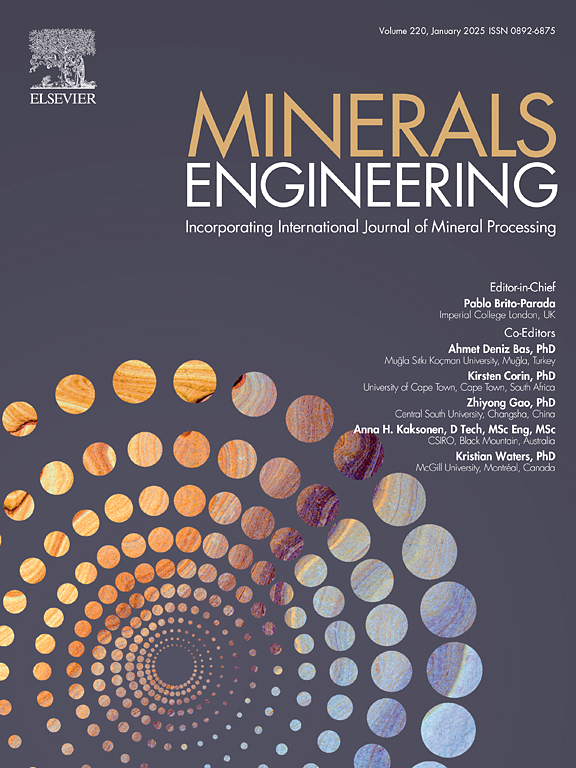释放可持续生物浸出的潜力:评价含铜黑色页岩中微生物诱导的金属回收
IF 5
2区 工程技术
Q1 ENGINEERING, CHEMICAL
引用次数: 0
摘要
一些矿床的参数,如低品位或特殊成分(即难熔相,有机化合物)阻碍了其有效的金属回收处理。然而,基于生物浸出的方法可以支持从金属含量低或矿物学复杂的材料中提取金属。本研究利用酸性硫氧化硫杆菌和荧光假单胞菌两种细菌对两种截然不同的Kupferschiefer页岩样品(LG -低铜含量,HG -富有机物,高铜含量)进行了金属生物浸出试验。对于LG样品,荧光假单胞菌的活性支持高铜和钼的提取,而硫代氧化假单胞菌支持高砷的提取。对于汞样品,硫氧化铁单胞菌和荧光单胞菌的活性导致铜的回收率较低,分别为1.8%和7.26%。页岩表面的蚀变与应用微生物有关,显示出浸出后硫化物的不同特征。本文章由计算机程序翻译,如有差异,请以英文原文为准。

Unlocking the potential of sustainable bioleaching: evaluating microbially induced metal recovery in copper-bearing black shales
Some of deposits parameters, such as lower grade or peculiar composition (i.e. refractory phases, organic compounds) hinder their effective processing for metal recovery. However, bioleaching-based methods could support metal extraction from materials showing either poor metal content or complex mineralogy. In this study, two distinctly different samples of Kupferschiefer shale (LG – with low copper content, HG – organic-rich with high copper content) were examined in terms of metal bioleaching using two bacteria: Acidithiobacillus thiooxidans and Pseudomonas fluorescens. For LG sample, activity of P. fluorescens supports high extraction of Cu and Mo, while A. thiooxidans supports As extraction. For HG sample, activity of A. thiooxidans and P. fluorescens resulted in poor copper recovery of 1.8% and 7.26%, respectively. Alteration on shale surfaces were specific to the applied microorganism, revealing different features of post-leaching sulfides.
求助全文
通过发布文献求助,成功后即可免费获取论文全文。
去求助
来源期刊

Minerals Engineering
工程技术-工程:化工
CiteScore
8.70
自引率
18.80%
发文量
519
审稿时长
81 days
期刊介绍:
The purpose of the journal is to provide for the rapid publication of topical papers featuring the latest developments in the allied fields of mineral processing and extractive metallurgy. Its wide ranging coverage of research and practical (operating) topics includes physical separation methods, such as comminution, flotation concentration and dewatering, chemical methods such as bio-, hydro-, and electro-metallurgy, analytical techniques, process control, simulation and instrumentation, and mineralogical aspects of processing. Environmental issues, particularly those pertaining to sustainable development, will also be strongly covered.
 求助内容:
求助内容: 应助结果提醒方式:
应助结果提醒方式:


